Semiconductor Package Temperature Control
Basic requirements for semiconductor packaging temperature
Semiconductor devices need to follow certain temperature requirements during their manufacturing and use. Among them, semiconductor packaging temperature is a very critical factor. Generally speaking, semiconductor packaging temperature requirements should include the following aspects:
1. The packaging temperature cannot be too high. Different types of semiconductor devices have different packaging temperature requirements. On the one hand, if the packaging temperature is too high, it will affect the electrical performance and reliability of the semiconductor device; on the other hand, if the packaging temperature is too low, mechanical stress may occur, affecting the functional performance of the semiconductor device. Therefore, the appropriate packaging temperature must be selected according to specific requirements when formulating the packaging solution.
2. The packaging temperature must comply with the manufacturing process. During the semiconductor manufacturing process, the selection of packaging temperature needs to take into account the integrity and reliability of the process. Generally speaking, manufacturers select packaging temperatures based on product requirements and manufacturing processes to ensure product quality and reliability.
3. Attention should be paid to ventilation and heat dissipation when packaging temperature. The semiconductor packaging temperature will generate a certain amount of heat. If the heat cannot be effectively dissipated, it will affect the working status and life of the semiconductor device. Therefore, during the packaging process, special attention should be paid to ventilation and heat dissipation issues, and appropriate materials and design solutions should be selected to ensure the stability and reliability of semiconductor devices.
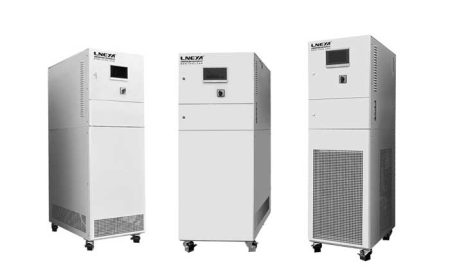
Factors affecting semiconductor packaging temperature selection
The selection of semiconductor packaging temperature is affected by many factors, including the following aspects:
1. Device type. Different types of semiconductor devices have different packaging temperature options. For example, the packaging temperature of silicon transistors is generally 200~300℃, while the packaging temperature of IGBT devices is generally 200~250℃.
2. Manufacturing process. The manufacturing process of semiconductor devices also affects the choice of packaging temperature. For example, during the wafer preparation stage, if the temperature is too high, the depth of the doped region may increase, affecting the electrical performance of the device; during the device structure preparation process, reasonable packaging temperature selection can alleviate mechanical stress and improve the reliability of the device. sex.
3. Packaging materials. The thermal expansion coefficient of semiconductor packaging materials also affects the choice of packaging temperature. If the thermal expansion coefficient of the packaging material is too different from that of the device material, temperature changes may cause mechanical displacement, negatively affecting device performance.
4. Ambient temperature. The selection of packaging temperature also needs to consider the temperature changes of the surrounding environment. If the surrounding environment temperature changes greatly, it may cause “thermal fatigue” in semiconductor devices and affect the life of the device.
In short, the temperature requirements for semiconductor packaging are very strict and require trade-offs and considerations among multiple factors. The selection of packaging temperature is not only related to the quality and reliability of the product, but also an important link that needs to be optimized when formulating semiconductor chip manufacturing and packaging solutions.
Wir bieten die Entwicklung und Herstellung kompletter Temperaturkontrollsysteme an. Von Standardmodellen bis hin zu kompletten kundenspezifischen Produkten. Wir haben uns auf den Kundenservice spezialisiert und sind bestrebt, jedem Kunden zu helfen, das optimale Temperaturkontrollsystem für seinen spezifischen Bedarf zu finden.
Wir bieten maßgeschneiderte Lösungen, die nicht dem Standard entsprechen. Es sind sowohl einzelne Kühlaggregate als auch kombinierte Kühl- und Heizaggregate erhältlich.
E-Mail: lilia@lneya.com WeChat ID: +8615251628237 WhatsApp: +86 17851209193

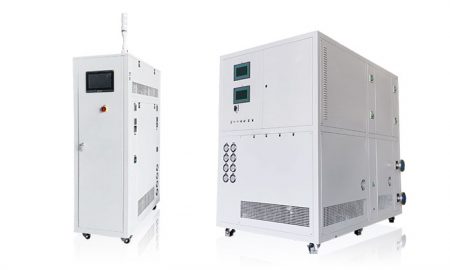
TES-Reihe (Benutzerdefinierte Designs)
Geeignet für die präzise Temperaturkontrolle von elektronischen Bauteilen. Bei der Herstellung von elektronischen Halbleiterkomponenten für raue Umgebungen umfassen die Phasen der IC-Gehäusemontage sowie der Entwicklungs- und Produktionstests auch elektronische Wärmetests und andere Simulationen von Umwelttests.
| Temperaturbereich | Serie -45°C ~ +250°C | Serie -85°C ~ +200°C | Serie -60°C ~ +200°C | ||||||
| Kühlleistung | 0,3 ~ 25kW | 0,25 ~ 25kW | 3 ~ 60kW | ||||||
| Hinweis: Jeder Temperaturbereich von -150℃ ~ +350℃ und jede Kühlleistung kann angepasst werden | |||||||||

LTS-Serie (fluorierte Flüssigkeit) (Benutzerdefinierte Designs)
Weit verbreitet in der Halbleiterfertigung zur Regelung der Temperatur der Reaktionskammer, der Temperatur der Wärmesenke und der Temperaturregelung der nicht brennbaren Flüssigkeit des Wärmeträgers.
| Temperaturbereich | -20°C ~ +80°C Reihe | Serie -45°C ~ +80°C | Serie -60°C ~ +80°C | Serie -80°C ~ +80°C | |||||
| Durchflusskontrolle | 7 ~ 45 L/min | 7 ~ 45 L/min | 7 ~ 45 L/min | 7 ~ 45 L/min | |||||
| Hinweis: Jeder Temperaturbereich von -150℃ ~ +350℃ und jede Kühlleistung kann angepasst werden | |||||||||

FLT-Reihe (Benutzerdefinierte Designs)
Das Halbleiter-Temperaturregelungssystem Chiller wird hauptsächlich für die präzise Temperaturregelung in der Halbleiterproduktion und im Testprozess verwendet. Er wurde speziell für die Halbleiterindustrie entwickelt und konstruiert.
| Temperaturbereich | +5°C ~ +40°C | -25°C ~ +40°C | -45°C ~ +40°C | -80°C ~ +80°C | -100°C ~ +80°C | ||||
| Kühlleistung | 6 ~ 40kW | 2 ~ 15kW | 1 ~ 8kW | 0,6 ~ 3kW | 1,5 ~ 3kW | ||||
| Hinweis: Jeder Temperaturbereich von -150℃ ~ +350℃ und jede Kühlleistung kann angepasst werden | |||||||||
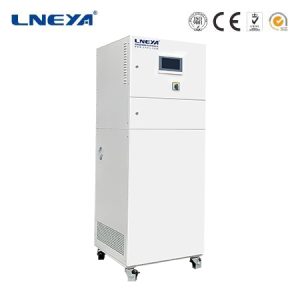
FLT Multi Channel Temp Contol (Benutzerdefinierte Designs)
Multi channel independent temperature control, which can have a separate temperature range, cooling and heating capacity, thermal conductivity medium flow rate, etc., adopts two independent systems. According to the required temperature range, steam compression refrigeration or ETCU non compressor heat exchange system can be selected. The system can be used for universal expansion tanks, condensers, cooling water systems, etc., which can effectively reduce equipment size and operation steps.
| Temperaturbereich | -20°C ~ +90°C | -45°C ~ +80°C | -10°C ~ +80°C | -20°C ~ +100°C | |||||
| Kühlleistung | 4kW | 5 ~ 13kW | 3 ~ 6kW | 8 ~ 15kW | |||||
| Hinweis: Jeder Temperaturbereich von -150℃ ~ +350℃ und jede Kühlleistung kann angepasst werden | |||||||||

FLTZ-Serie Frequenzumwandlung (Benutzerdefinierte Designs)
Die Temperaturregelung, die Umwälzpumpe und der Kompressor werden alle durch Frequenzumwandlung eingestellt.
| Temperaturbereich | -30°C ~ +40°C | ||||||||
| Kühlleistung | 5 ~ 11kW | ||||||||
| Hinweis: Jeder Temperaturbereich von -150℃ ~ +350℃ und jede Kühlleistung kann angepasst werden | |||||||||
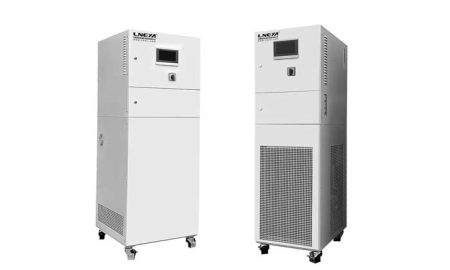
ETCU-Reihe (Benutzerdefinierte Designs)
Art des Wärmeaustauschs
System ohne Kompressor
| Temperaturbereich | +5°C ~ +90°C | ||||||||
| Kühlleistung | 5 ~ 30kW | ||||||||
| Hinweis: Jeder Temperaturbereich von -150℃ ~ +350℃ und jede Kühlleistung kann angepasst werden | |||||||||

Baureihe ZLFQ (Benutzerdefinierte Designs)
Kühlmittelverteilereinheit
Flüssigkeitskühlgeräte eignen sich für die Prüfung von Halbleitern, die Prüfung elektronischer Geräte bei konstanter Temperatur, die Kühlung der Serverinfrastruktur und andere Orte, an denen die Temperatur von Flüssigkeiten kontrolliert wird.
| Temperaturbereich | +5°C ~ +35°C | +5°C ~ +35°C | |||||||
| Kühlleistung | 15 ~ 150kW | 200 ~ 500kW | |||||||
| Hinweis: Jeder Temperaturbereich von -150℃ ~ +350℃ und jede Kühlleistung kann angepasst werden | |||||||||

MD-Thermofutter-Serie (Benutzerdefinierte Designs)
Es wird für die Prüfung von HF-Bauteilen und Leistungsbauteilen mit hoher Dichte (IGBTs und MOSFETs) verwendet und kann auch für die schnelle Kühlung von flachen Laborplatten (Plasma, biologische Produkte, Batterien) usw. eingesetzt werden.
| Temperaturbereich | -75°C ~ +225°C | ||||||||
| Temperaturgenauigkeit | ±0.1℃ | ||||||||
| Hinweis: Jeder Temperaturbereich von -150℃ ~ +350℃ und jede Kühlleistung kann angepasst werden | |||||||||
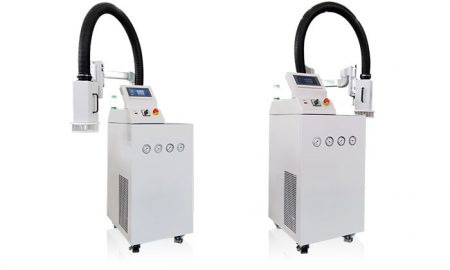
Strahlenschlagprüfmaschine der Serie AES
Temperaturregelbereich: -120°C ~ +225°C
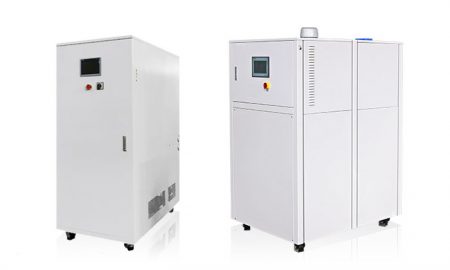
AI-Serie Umluft-Temperaturregelsystem
Temperaturregelbereich: -105°C ~ +125°C

Temperaturregelbereich: -110°C ~ -40°C
YQH Serie VOCs Abgaskondensationsrückgewinnungsgerät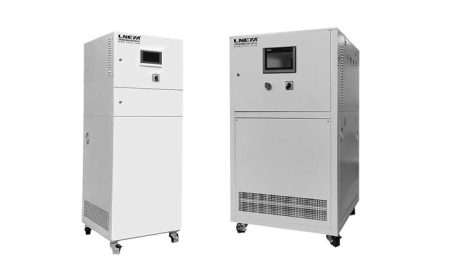
Angewandt auf die Rückgewinnung von Gaskondensation und Verflüssigung. Die Abgase oder andere elektronische Gase werden über den Saugzugventilator (Vakuumpumpe) an das Gerät angeschlossen, verflüssigt, gesammelt und durch Absenken der Temperatur in den Sammelbehälter abgeschieden, und andere Gase werden abgeleitet, um die Kondensation, Erfassung und Rückgewinnung des Gases zu realisieren.
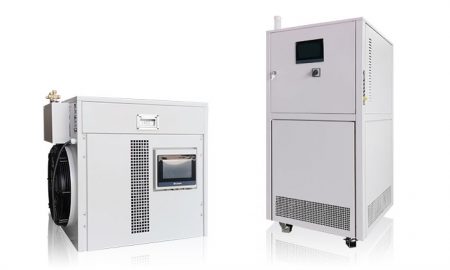
Baureihe ZLJ / SLJ (Benutzerdefinierte Designs)
Er ist für Orte geeignet, an denen die Wärmeaustauschfläche des Wärmetauschers klein, die Wärmeaustauschkapazität jedoch groß ist. Das Kältemittel wird direkt in den Ableiter geleitet, um zu verdampfen, und das Gas im Raum wird durch den Kondensationseffekt an der Oberfläche des Ableiters schnell aufgefangen.
| Temperaturbereich | -40°C ~ -15°C | -80°C ~ -50°C | -150°C ~ -110°C | ||||||
| Kühlleistung | 0,5 ~ 4kW | 0,37 ~ 3,1kW | 2,5 ~ 9kW | ||||||
| ZLJ-Reihe | SLJ-Reihe | ||||||||
| Hinweis: Jeder Temperaturbereich von -150℃ ~ +350℃ und jede Kühlleistung kann angepasst werden | |||||||||
 LNEYA
LNEYA
 简体中文
简体中文


















































































